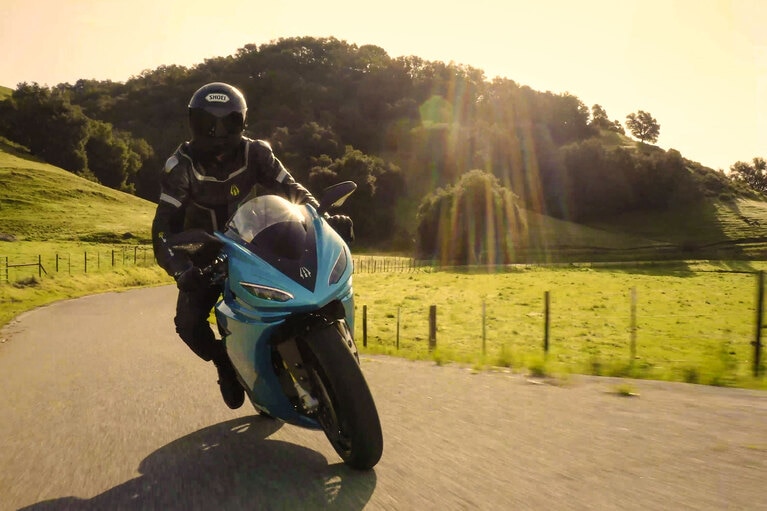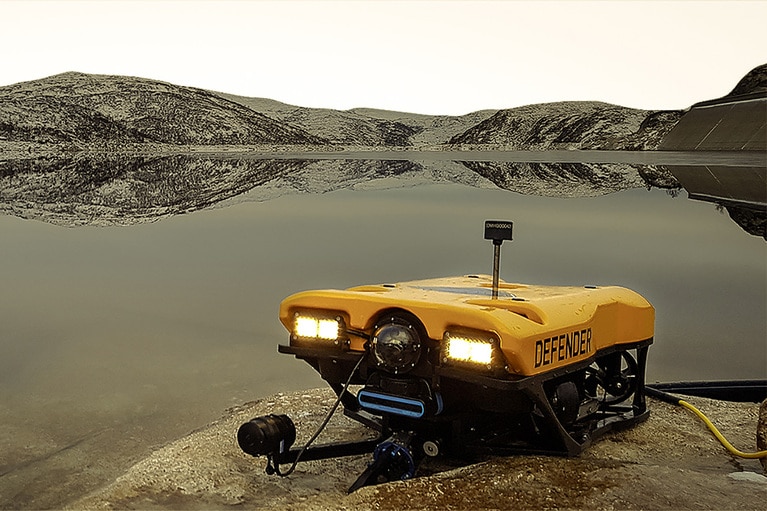Podcast with Reenst Lesemann, CEO, Columbia Power Technologies and host, Jason Lomberg at Power Systems Design
Do you realize that ocean waves breaking around the world’s coastline can deliver as much as the 2 – 3 million megawatts of total power? The ocean is a constant source of clean, free energy. However, ocean wave power presents some unique challenges that are not easily solved. But progress is being made.
Columbia Power Technologies, Inc. (C-Power), a global leader in wave energy systems based in Corvallis, Oregon, is helping to expand the marine economy by providing reliable, cost-effective energy generation and storage, as well as data and communication services for offshore applications. C-Power autonomous offshore power systems (AOPS) float in the ocean, capturing mechanical wave energy and converting it into usable power for a wide range of applications. The AOPS design, called SeaRAY, can generate 10W – 1MW from ocean waves.
Columbia Power Technologies CEO Reenst Lesemann was a guest on PSDcast with host Jason Lomberg at Power Systems Design to discuss their innovative power design and the opportunity that SeRAY presents.
LOMBERG: Welcome to the PSDcast with your host, Jason Lomberg at Power Systems Design. In the pantheon of renewable energy, ocean wave energy harvesting doesn’t get discussed all that often, and that’s a shame. While it’s not quite as mainstream as solar or wind power, considering that the Earth is nearly three-quarters water, and by one estimate, the total power of waves breaking around the world’s coastlines is around 2 – 3 million megawatts, ocean wave energy harvesting could be one of the great untapped opportunities.
Here to discuss a new development in the process of converting kinetic and potential energy contained in the natural oscillations of ocean waves is Columbia Power Technologies CEO Reenst Lesemann. Along with Vicor, C-Power helped develop a new version of their autonomous offshore power system called SeaRAY. And today, we’re going to learn a little bit more about this new platform.
Reenst, thanks so much for joining us. Before we go any further, can you give our listeners a brief intro to C-Power, please?
LESEMANN: Sure. Good morning, Jason. Thanks for having me on. C-Power is an ocean energy company, which means that we are delivering a host of technologies that convert ocean energy, wave energy, mechanical energy into other usable forms of energy. That might be electricity, as it is in the case of the SeaRAY that we’ll talk about today. It could be hydrogen or ammonia, potentially for fuel cells.
LOMBERG: Can you explain how C-Power’s focus ties into a DARPA project called Wave Energy Buoy Systems?
LESEMANN: Sure. C-Power – we got our original start from a technology licensed from Oregon State University. Oregon State in the US is one of the academic centers of gravity for wave energy research. Our original mission – and we still retain this mission – is for utility-scale systems. These are large, megawatt-scale devices that are connected to the grid, providing wholesale energy for homes and businesses ashore.
The DARPA project – we teamed with, actually, the University of Washington Applied Physics Lab. This was a project that DARPA was looking to create a tactical wired network – a fiber optic network offshore – and needed power, obviously, for that network. Because of all the hard work that we had done on the utility-scale systems, we were able to fairly quickly devise a small, 100-watt system that could be used to power this fiber optic network offshore.
That’s really, for us, where we started to understand that – again, while we had been dwelling at the megawatt-scale end of the power spectrum, that at the far opposite end, at watt scale and at kilowatt scale, that there was potentially a pretty big opportunity. That opportunity really was driven by this need to deliver more autonomous electric digital systems offshore, systems that didn’t require a ship and a crew to run them.
LOMBERG: Let’s take a step back. In a general sense, how underutilized is ocean wave energy harvesting as a renewable energy source, and why do you think that is?
LESEMANN: I always use the phrase that if it was easy, everybody would be doing it – is kind of the quick answer. It is a very hard problem. Anyone that has a boat or spends any time on the ocean knows that whatever you put out there is going to break, and it’s going to break at a time that you don’t want it to break, because the ocean is very energetic. It can be very rough. And that requires or demands a level of survivability and reliability for any technology that you put out in the ocean.
The problem when you do that is the tendency to want to overengineer a piece of equipment. If you overengineer it to make it safe and reliable and make sure nothing’s going to go wrong, that tends to drive up the cost. And once you drive up the cost and the size – it’s a very difficult problem to solve, all of those different constraints.
And then when you start to think about operational requirements for customers – say that someone wants to run a data gathering system offshore 24/7 for the next five years and never have a ship visit it – you have a whole other set of requirements that comes in that makes it really a difficult proposition. It’s a code that we are cracking as we are commercializing our systems now, but it’s difficult.
That, I think, leads to the underutilization of the resource. It’s harder to harness. Wind and solar obviously are there and are doing great. But wave energy is coming, and it’s coming because it’s such an energy-dense and attractive resource. It’s significantly more dense than the wind or the sun – the energy coming from those. So it’s attractive, but we just can’t snap our fingers and get there.
LOMBERG: Sounds about right. Explain SeaRAY. What is it? What’s its goal? And apart from what you’ve already said, why was it necessary in the first place?
LESEMANN: Let’s maybe start with the last part of that. The SeaRAY – it’s what we call an autonomous offshore power system, or AOPS. It’s necessary for a couple reasons. If you want to do anything in the ocean, it is very people- and capital- and carbon-intensive. You always have to take people and power to do anything in the ocean, if you think about it. If you want to break that chain and deliver more autonomous services and hardware offshore – think about autonomous vehicles, sub-sea vehicles doing work underneath the surface of the ocean, or unmanned service vessels that are doing work for research or defense or security – all of these things require power. If you want to avoid having to take that vessel out there, which is very, very expensive, then you need to have a power and a data solution.
The SeaRAY AOPS – we like to think of it as the combination of a charging station and a cell tower and a data server all wrapped up into one package. The SeaRAY wave energy system on the surface – it captures and converts wave energy, converts it into electricity in this instance. We keep a battery charged. And then whatever the asset is, whether it’s a sub-sea vehicle or a piece of data gathering equipment or a piece of operating equipment, it operates off that battery. Then we connect the data cloud to that asset so there’s real-time, bidirectional data transfer.
Say you have a data gathering system on the sea floor in the middle of the Pacific Ocean. As it collects its data, that works its way through the AOPS up to the cloud. Then you can also send data in the other direction to give it instructions or turn it on and off or whatever the need may be.
LOMBERG: OK. Now, I understand this was a collaboration. So what was Vicor’s contribution to the project? And after adding Vicor components, what was SeaRAY’s design conversion efficiency?
LESEMANN: Part of the challenges that I didn’t mention earlier of wave energy is that it is a variable resource. What is critical is that we harness that power so that it is in a usable form. Vicor’s contribution to this project was creating a stable, wide-range DC-to-DC converter that really could be used on a number of our devices. We have really three buckets of technology that we are working on – watt-scale, kilowatt-scale, which is the SeaRAY AOPS, and then megawatt-scale, which is the StingRAY. The Vicor system is directly applicable for those first two buckets, the watt- and the kilowatt-scale bucket.
And then from an efficiency perspective, efficiency with a wave energy system – it’s a bit of a tricky topic, right? Because there’s hydrodynamic efficiency, how well we capture and convert the energy. Then there’s also electromechanical and power electronic conversion and then the energy storage. But overall, our target efficiency for this system is around 80%. The Vicor converter – it ranges from about 65% at the very low end and then really rapidly increases to over 95% at higher voltages. That’s a rated range between 14 volts DC and 400 volts DC input coming from our permanent magnet generator.
LOMBERG: Excellent. Well, thanks, Reenst. On behalf of PSD, I want to thank you for your time.
This podcast was originally published by PSDcast.










